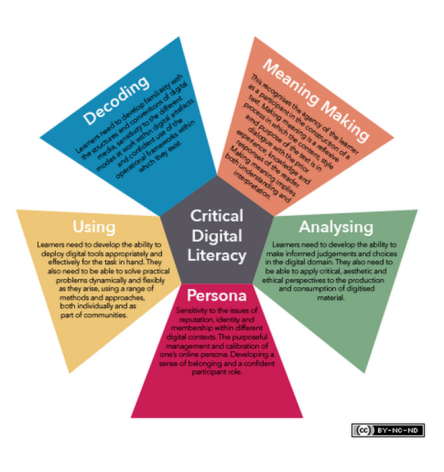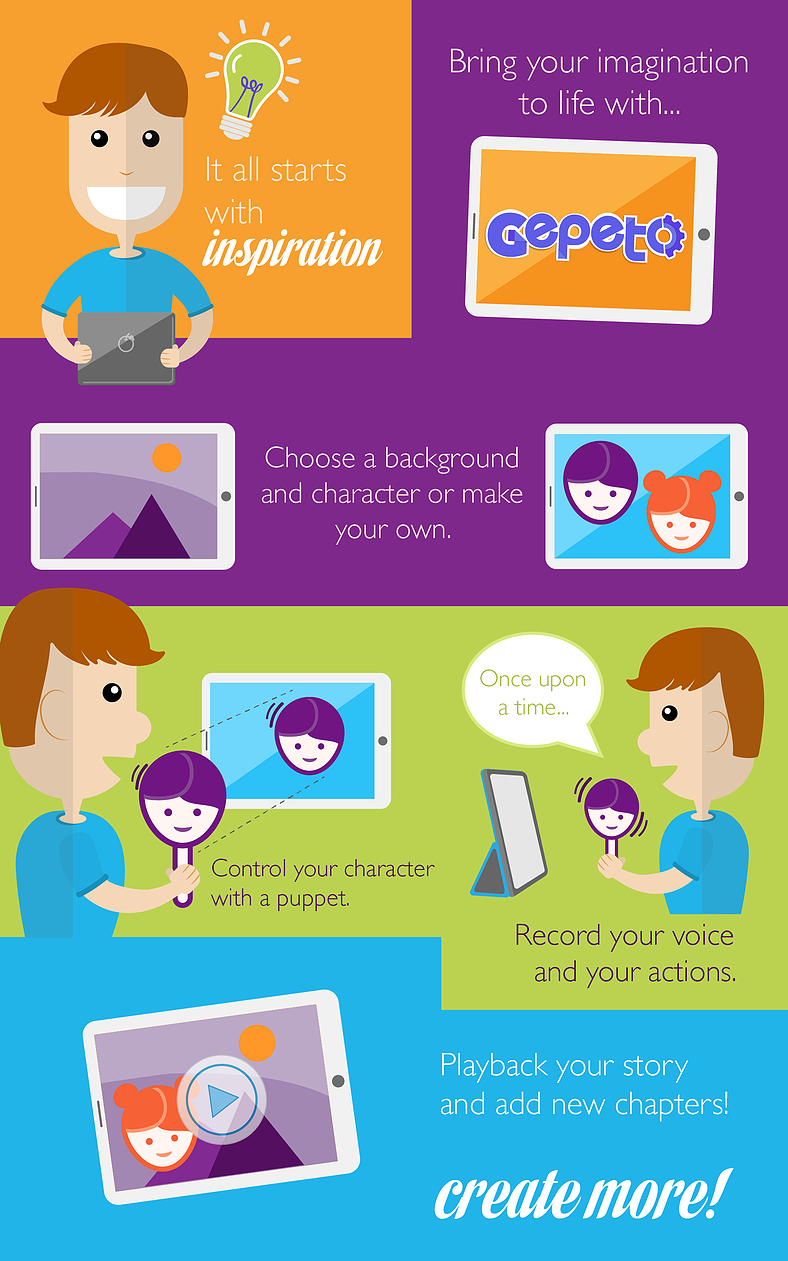The medium is the message. – Marshall McLuhan
 New York City libraries will soon let patrons “check out the Internet” by Nancy Scola (The Washington Post, December 4, 2014)
New York City libraries will soon let patrons “check out the Internet” by Nancy Scola (The Washington Post, December 4, 2014)
New York City residents can now check out an Internet hotspot to use in their own homes. This normally monthly financial obligation is available to any patron with a library card and are currently enrolled in a community-based program, such as citizenship classes. This is in response to a University of Albany-SUNY study that found that “in 2011, nearly 30 percent of households in New York City were not subscribed to broadband at home”. It is part of a broader initiative by the city to close the digital divide. A related program includes turning city pay phones into WiFi hotspots.
Critical Digital Literacy Explained for Teachers (Educational Technology and Mobile Learning, December 2014)
This website highlights a framework developed by Juliet Hinrichsen and Anthony Coombs from the University of Greenwich. Their purpose: To provide a conceptual understanding of how we read in the informational/digital age.

These five domains and descriptions may be a departure from our current understanding of literacy. For example, learners need to “develop familiarity with the structures and conventions of digital media”. This standard would likely include the use of hashtags and the difference between saving and publishing. In addition, educators should understand the “issues of reputation, identity and membership within different digital contexts”.
Maryanne Wolf: Balance technology and deep reading to create biliterate children by Joan Richardson (Phi Delta Kappan, November 2014).
In this interview with literacy researcher Maryanne Wolf, Richardson investigates the current status of deep reading in the age of digital texts. She also inquires as to how educators might want to change their instructional approach. Dr. Wolf shares from her findings that reading an eBook, such as on a Kindle, does not adversely affect comprehension when compared to reading in print.
At the same time, Dr. Wolf recognizes that learners need to be taught how to select the format of text based on the purpose for reading. She highlights her own experiences in reading on a screen. “I become more like the medium: I read for speed and immediacy.” The interview is concluded by Dr. Wolf proposing a new term for the educational lexicon – “biliterate”, or the ability to successfully read both in print and online – to describe the new expectations for learners in the 21st century.
Daniel Learned ALL About Audiences Yesterday by Bill Ferriter (Center for Teaching Quality, December 11, 2014)
Bill Ferriter, a middle school teacher, shares his frustrations with regard to a series of negative comments his students received on their blog. Mr. Ferriter and his class are actively involved in sharing information about the negative affects of sugar on human health, using the hashtag #sugarkills to connect their thoughts. One commenter pointed out the possible errors in the students’ thinking, apparently unaware of the effect his negative responses had on the students. Mr. Ferriter deleted this person’s comments, and lamented on whether providing a global audience for his students is worth the risk.
The Mismeasure of Boys: Reading and Online Videogames by Constance Steinkuehler (Department of Curriculum & Instruction/Wisconsin Center for Education Research, University of Wisconsin–Madison, July 2011)
This working paper describes a study conducted three years ago, regarding the connection between reading and videogames. Dr. Steinkeuhler points out the decline of males pursuing post-secondary degrees, as well as the increased likelihood that boys are being diagnosed with ADHD. Dr. Steinkeuhler also questions the negative perception of video games, and how many assume that this activity takes away time from boys actually reading.
Instead, “for many young people, reading is not an activity replaced by videogames, but rather it is an integral part of what it means to participate and play”. This theory is supported by her findings, that when motivated to achieve the next level in a video game, the participants were able to read six grade levels above their current reading level. Dr. Steinkeuhler concluded this study by stating that “the findings about videogames can be viewed as one powerful solution to—rather than a cause of—the problem of adolescent boys and reading.”
Searching for trends…
I hosted my second Professional Learning Communities (PLC) Twitter chat on Thursday night. We use the hashtag #atplc, a community supported by Solution Tree, publisher of many PLC resources. Our topic for discussion: Beliefs and Values. We tried something different that night. Instead of our regular Q and A, I posted a Google Form to survey the participants on their own beliefs about PLCs. Out of seven statements, we found total agreement on one. I shared out the results to the participants, which then directed our subsequent discussion in the chat.
From the moment I shared out our beliefs survey and started watching the results, the Twitter chat stopped existing as a Twitter chat for me. It became an authentic examination of our beliefs as a community of practice. The technology faded away as I shared out the final results, read the participants’ responses, and followed up with questions that would help the discussion reach deeper levels of learning.
It is in times like these that I realize technology is more than just a tool. Just like the professor who assumed the role of a student from a previous post, I have found that technology is a context for learning and not merely another tool for instruction. The chat I just described would not have occurred without the affordances of what is possible online. To designate digital access as anything less than this may reflect a lack of experience or understanding in the possibilities. I have been guilty of this misconception in the past.
The five highlighted articles here all have one thing in common: The discussion is not about whether technology is necessary, but about how technology can best be applied to the context of learning. Sometimes this context may need help to be realized, such as allowing library patrons to check out WiFi hotspots, or exploring the effects of video games on boys’ reading comprehension. But the more technology becomes an integral part of the learning process, the less it feels like technology at all. It is often simply how we learn.
This post is sponsored by:
[vimeo 111680878 w=500 h=281]
Gepeto Crowdfunding Video from Yugen on Vimeo.


5 responses to “Beyond Technology”
Reblogged this on Reading By Example and commented:
When does technology become more than just a tool, and rather a necessary context for learning? I explore this question by highlighting five different articles and studies.
– NYC libraries are now allowing patrons to check out WiFi hotspots.
– A new literacy framework for educators focuses on social media skills.
– eReaders such as Kindles and Nooks show little difference in comprehension when compared to reading in print.
– A teacher’s students learn how to handle a rude commenter.
– A study of videogames shows boys can read six levels above their current reading level when motivated to get to the next stage.
This post is concluded with my own experience in how, when engaged in deep learning, the technology just seems to fade away. I hope you extend our learning in the comments!
Great post. You helped me find a good teacher doing great work with middle schoolers who’s blogging about it! Also, I loved following your thinking through the link of all these articles. I’d love to join your chat.
Thank you for the comment, and thankful that the chat helped you connect with someone else.
So I’m thinking about three levels from this post – tech for tech’s sake, tech as a tool, and finally your piece technology as a context for learning. We work and learn with folks from those three camps (or some group somewhat similar groups) everyday. What I’ve been getting up for every morning of my career is trying to move folks to see technology beyond what they are used to, or what a conference keynote tells them it would be. Personally I believe people need to find that on their own. I’m not talented enough in human resources development to claim to have a plan to guide people across that continuum.
Ideas out there?
I am curious about this topic too, Nathan. In my humble opinion, using technology in a way that enhances and even redefines instruction needs to be modeled for teachers. When they see what is possible, are given time to try it out, and provided lots of support and feedback during the initial attempts, only then is best practice with technology realized in the classroom. This leadership falls on instructional leaders, such as coaches, principals, and tech support. Your school is lucky to have you as one of their leaders, Nathan!